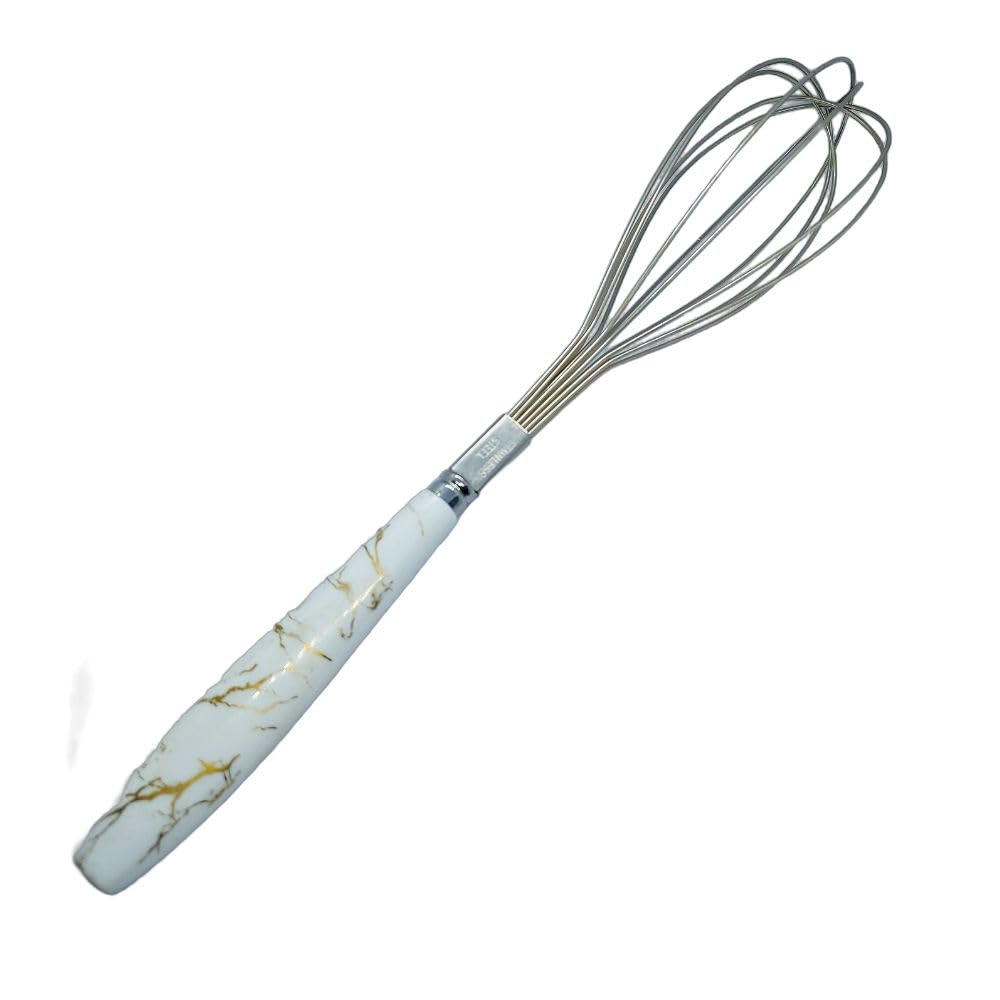In the bustling world of the kitchen, where flavors dance and ingredients harmonize, there exists a humble yet indispensable tool that often takes center stage—the whisk. Beyond its seemingly simple design, the whisk is a culinary marvel that has been a faithful companion to chefs and home cooks alike for centuries.
A Dance of Wires and Handles: The Anatomy of a Whisk
At first glance, a whisk might seem like nothing more than a bundle of wires attached to a handle. However, this deceptively simple tool is a testament to the artistry and functionality that goes into kitchen utensil design. The wires are strategically arranged to create a shape that maximizes efficiency in mixing, beating, and incorporating air into various ingredients.
The handle, often overlooked, plays a crucial role in the whisk’s usability. Ergonomically designed handles ensure a comfortable grip, allowing for prolonged whisking without causing fatigue. Materials like wood, plastic, or silicone are carefully chosen not only for their durability but also for their contribution to the overall aesthetics of the whisk.
Whisking Through History: A Journey in Culinary Time
The whisk has a rich history, evolving alongside the development of culinary techniques and recipes. From the early days of handmade whisks crafted from twigs and branches to the intricately designed copper whisks of the Renaissance, this kitchen essential has witnessed and adapted to the changing landscapes of culinary arts.
Today, whisks come in various shapes and sizes, each tailored to specific culinary tasks. The balloon whisk, with its rounded shape, is perfect for whipping cream and egg whites, while the flat whisk excels at stirring and smoothing out sauces. The French whisk, with its slender and elongated design, is ideal for delicate tasks like emulsifying vinaigrettes.
Whisking Beyond Boundaries: Innovation in the Kitchen
As technology advances, so does the innovation in kitchen tools, and the whisk is no exception. Modern whisks feature materials like silicone-coated wires for non-stick applications, ergonomic designs for user comfort, and even electric or battery-powered options for those who prefer a hands-free approach.
In recent years, the whisk has become more than just a utilitarian tool; it has become a symbol of creativity in the kitchen. Whisks with colorful handles, unique patterns, and eye-catching designs add a touch of personality to the cooking experience, turning a simple kitchen task into a form of self-expression.
The Whisk in Action: From Batter to Bliss
Whether you’re whisking up a batch of fluffy pancakes, creating a silky-smooth sauce, or aerating your favorite dessert, the whisk is the unsung hero behind countless culinary delights. Its ability to incorporate air into mixtures transforms ordinary ingredients into extraordinary creations, leaving a trail of smiles and satisfied palates in its wake.
In conclusion, the whisk is more than just a tool; it’s a culinary companion that has stood the test of time. From its humble beginnings to its current status as a symbol of innovation and creativity in the kitchen, the whisk continues to weave its magic, turning everyday ingredients into culinary wonders. So, the next time you reach for that trusty whisk in your kitchen, take a moment to appreciate the art and science behind this timeless culinary marvel. Happy whisking!

